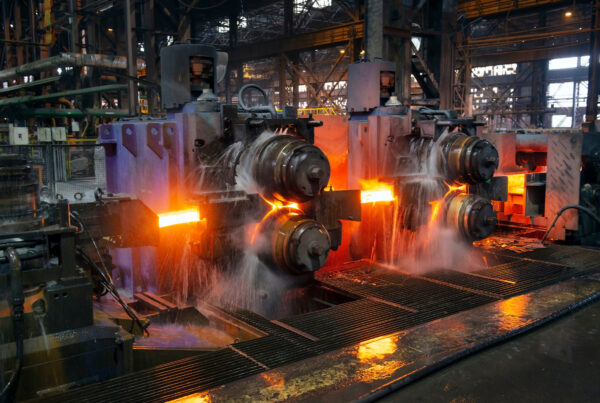At the heart of the dynamic realm of reliability and asset management lies the crucial task of safeguarding an organisation’s valuable assets. These professionals are the guardians of operational efficiency, entrusted with the vital responsibility of ensuring that equipment, machinery, infrastructure, and systems function seamlessly, reliably, and efficiently throughout their entire lifecycle. With a strategic blend of foresight and expertise, they navigate the challenges of optimising asset performance, reducing downtime, and maximising long-term value.
What Can The Role Involve
Their role involves various tasks and responsibilities, including:
- Asset Monitoring and Performance Analysis: Tracking the performance of assets, collecting data, and analysing trends to identify patterns of inefficiency or potential failures.
- Maintenance Strategy Development: Developing and implementing maintenance strategies that aim to maximise asset reliability while minimising downtime and maintenance costs.
- Risk Assessment and Mitigation: Identifying potential risks and vulnerabilities related to asset reliability and developing strategies to mitigate these risks.
- Condition Monitoring: Using techniques such as vibration analysis, infrared thermography, and ultrasound to monitor the condition of assets and detect early signs of wear or malfunction.
- Root Cause Analysis: Investigating the causes of asset failures to determine underlying issues and prevent recurrence.
- Reliability Centred Maintenance (RCM): Applying RCM methodologies to determine the most effective maintenance approach for each asset based on its criticality and potential impact on operations.
- Lifecycle Planning: Developing strategies for the entire lifecycle of assets, including acquisition, operation, maintenance, and eventual replacement or decommissioning.
- Data-Driven Decision Making: Using data analytics and predictive maintenance tools to make informed decisions about maintenance schedules and resource allocation.
- Spare Parts Management: Ensuring that the right spare parts are available when needed to minimise downtime during maintenance and repairs.
- Continuous Improvement: Continuously seeking ways to enhance asset performance, reliability, and efficiency through process improvements and technology advancements.
- Collaboration: Collaborating with cross-functional teams, including operations, engineering, procurement, and finance, to ensure alignment in asset management strategies.
- Compliance and Regulations: Ensuring that assets meet regulatory requirements and comply with industry standards.
Navigating Complex Challenges in Reliability and Asset Management
- Balancing maintenance costs and efficiency: Striking the right balance between minimising maintenance costs and maximising operational efficiency is a delicate task. Professionals must determine optimal intervals for maintenance activities to prevent disruptions without overspending.
- Predicting and preventing equipment failures: Anticipating and mitigating potential equipment failures is a constant concern. Using data-driven insights and predictive analysis, experts aim to identify early warning signs and implement proactive measures to avoid unexpected downtime.
- Optimising asset performance and longevity: Extending the lifespan of assets while ensuring peak performance is a critical goal. Professionals seek ways to enhance reliability, minimise wear and tear, and maximise overall asset value over time.
- Managing data for informed decision-making: The vast amount of data available today presents both an opportunity and a challenge. Effective data management and analysis are essential for making informed decisions about maintenance schedules, performance improvements, and resource allocation.
- Adapting to evolving technology and industry trends: Rapid technological advancements and shifting industry trends add a layer of complexity. Professionals must stay updated on the latest tools, methodologies, and best practices to remain effective in an ever-changing landscape.
Strategies for Effective Reliability and Asset Management
Implementing Condition-Based Maintenance: By closely monitoring asset conditions through sensors and data analytics, teams can shift from scheduled maintenance to a more efficient condition-based approach, reducing downtime and costs. According to the Vibration Institute, integrating sensors for real-time data allows proactive monitoring.
This shift also enables predictive maintenance, cutting downtime by identifying issues early according to Deloitte. Optimised resource allocation and minimise downtime are achievable through this approach, as highlighted in the International Journal of Production Research. Ultimately, the implementation of condition-based maintenance extends asset lifespan (Source: International Journal of Mechanical and Production Engineering, “Enhancing Machine Life in the Manufacturing Industry,” 2018), making it a strategic choice for enhancing efficiency and achieving substantial cost savings.
Embracing Predictive Analytics: Leveraging advanced algorithms, professionals can predict potential equipment failures with greater accuracy, allowing for timely interventions and improved asset reliability.
Utilising Maintenance Management Software: Specialised software streamlines work orders, asset tracking, and maintenance scheduling, enhancing communication and coordination among teams for better efficiency.
Investing in Continuous Training: Keeping teams well-trained on the latest tools, technologies, and industry practices is crucial. Regular training empowers professionals to adapt to new challenges and optimise asset performance.
Promoting Cross-Functional Collaboration: Encouraging communication and collaboration among different departments fosters a holistic understanding of asset management. By sharing insights and expertise, organisations can develop comprehensive strategies that address challenges more effectively.
How Can Alphatec Engineering Help
In the realm of reliability and asset management, the foundation for success lies in the stability of your machinery and equipment. Alphatec Engineering offers tailored foundation solutions that strengthen your assets’ structural integrity, minimising vibrations, misalignments, and wear that can lead to breakdowns. By partnering with Alphatec Engineering, you gain access to a wealth of expertise in machinery foundation design and implementation.
Our solutions not only enhance the performance of your assets but also contribute to prolonging their lifespan and optimising their reliability. With Alphatec Engineering as your ally, you can navigate the challenges of reliability and asset management with confidence, knowing that your foundations are fortified for long-term success. Reach out to us today and embark on a journey toward enhanced asset reliability and management.



